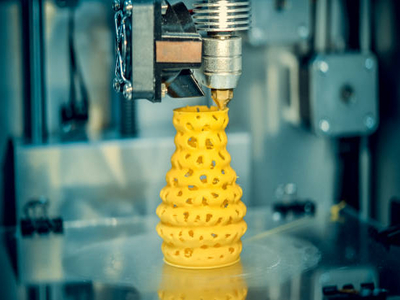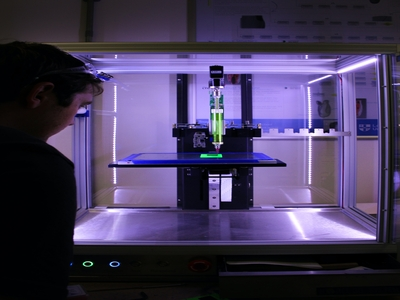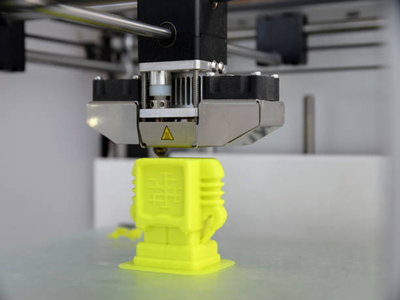While 3D printers are revolutionizing the world of manufacturing, they can be annoyingly noisy, but exactly how loud are 3D printers?
Some of the newer 3D printers are much quieter than the older models, but even the newer ones can still be quite loud.
If you are looking for a 3D printer that is not too noisy, you may want to check out some of the newer models or look for one that has been specifically designed to be quiet.
There are also some 3D printing filaments that can help to reduce noise, so this is another option to consider if you are looking for a quieter 3D printer.
Average 3D Printer Noise Level

When it comes to 3D printers, one of the most common complaints is the noise level.
On average, a 3D printer will produce around 50 decibels of noise, which can be quite disruptive if you are trying to work or concentrate on something else.
What Causes A 3D Printer To Be Loud?
The main source of noise on a 3D printer is the motors or the small devices that are responsible for moving the print head and extruder around the build plate.
Most motors use brushes to create rotational force, and these brushes can create a lot of vibration and noise.
Another common source of noise on 3D printers is the fans.
These small devices are used to cool the extruder and prevent overheating but unfortunately can also create a lot of noise.
Finally, some 3D printers use stepper drivers to move the print head and extruder around the mainboard and do lend a hand to additional noise.
If your printer has exposed fans, stepper drivers, or motors, you may want to consider investing in sound-damping materials or replacing the fans with quieter models.
The video below compares a few 3D printers to find out which one is quiet enough to be in an office setting:
Read More: Best FDM 3D Printer. Here are our favorite FDM printers on the market!
How Can I Reduce My 3D Printer’s Noise?

Fortunately, there are a few things that can be done to make a 3D printer quieter.
One option is to invest in a sound-dampening enclosure to help muffle the noise generated by the printer.
Another option is to use sound-absorption materials such as acoustic foam or sound-deadening blankets.
These can be placed around the printer to help reduce the noise that it emits.
Finally, it is also important to make sure that the 3D printer is properly calibrated.
If the printer is not level, it will vibrate more and produce more noise.
By taking these steps, it should be possible to significantly reduce the noise emitted by a 3D printer.
Is Your Cooling Fan Too Loud?

One component that may often be overlooked in terms of noise, is the fan.
This accessory plays an integral role in regulating machine temperature, allowing your 3D printer to print objects reliably and smoothly.
In addition, the fan also helps to disperse heat from areas of high concentration, ensuring optimal performance.
Fans are a critical component, that much is true, but there is a wide price range of fans that comes with a wide range of benefits.
Unfortunately, because fans are critical components, manufacturers can save costs by using cheaper models rather than opting for more expensive fans with better cooling power that would lessen noise.
While this may seem like a drawback at first glance, it actually allows you to enjoy all the same functions of a more expensive model at a fraction of the price.
And while there are certainly some drawbacks to lower-quality machines, overall you can take precautions to reduce the noise level when used correctly and maintained properly.
Read More: How to Waterproof 3D Prints. Take your prints to the next level!
X, Y, and Z-axis noise reduction
When it comes to maintaining your 3D printer, there are a number of factors to consider.
The health and performance of your X and Y-axis linear bearings is one crucial aspect to think about.
To guarantee that these critical components function at their best, many experts advocate using small machine lubricants.
Thicker greases will cause your internal bearings to slide rather than roll, resulting in more wear and dirt buildup.
This can have a significant impact on the precision of your linear bearings, causing lower precision, higher friction, and even frequent failures.
To prevent these issues, use a thin lubricant developed especially for 3D printers.
Fortunately, there are many high-quality 3D printer lubricant choices on the market today that are specifically made for this.
You can help ensure the long-term health and performance of your 3D printer’s X and Y-axis linear bearings by using one of these thin grease lubricants and following proper cleaning and maintenance procedures.
So, if you want to get the most out of your printer and lessen the noise, make sure to add a thin machine oil to your toolkit!
Articles You Might Want to Read